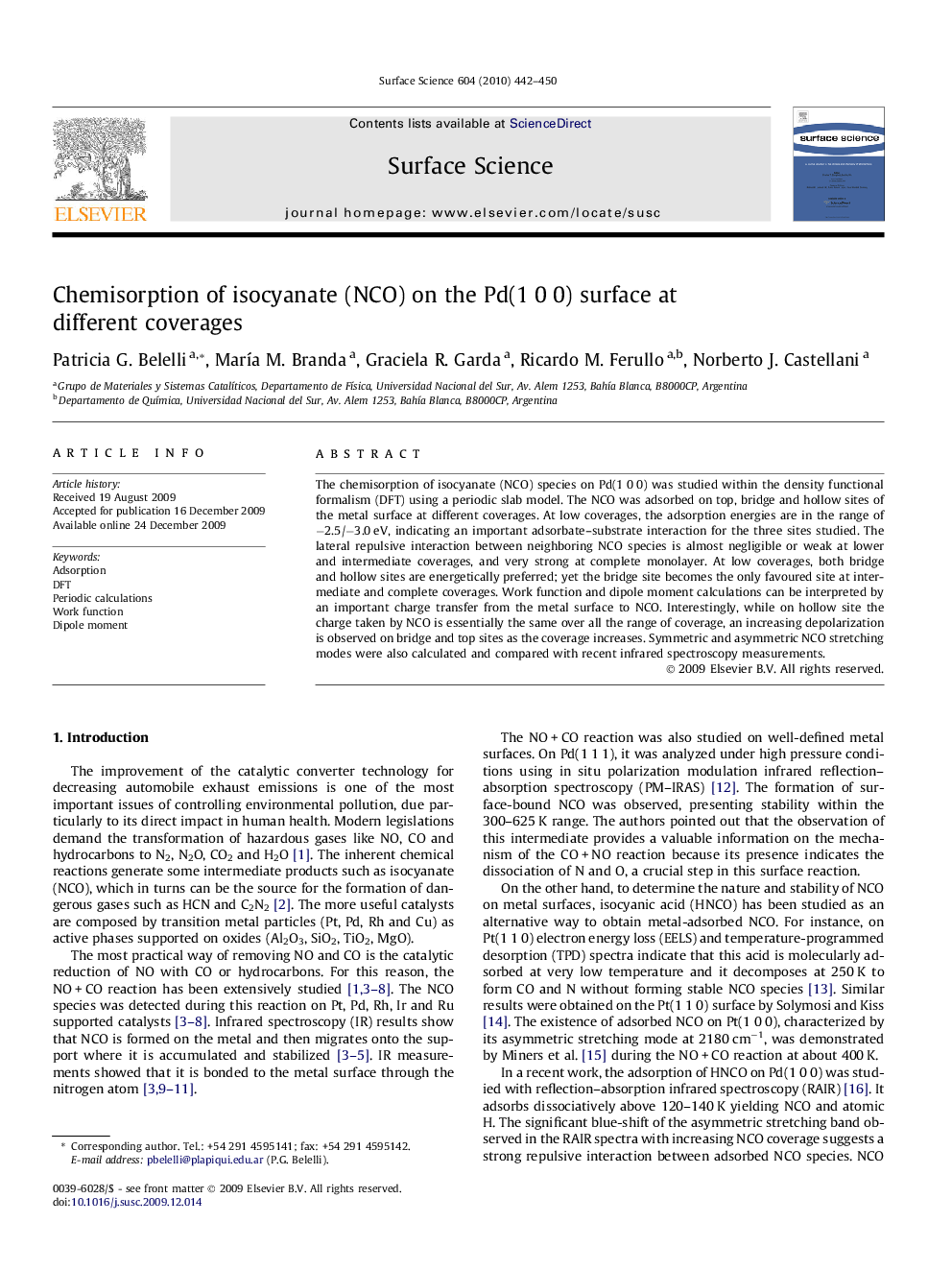| Article ID | Journal | Published Year | Pages | File Type |
|---|---|---|---|---|
| 5424149 | Surface Science | 2010 | 9 Pages |
Abstract
The chemisorption of isocyanate (NCO) species on Pd(1Â 0Â 0) was studied within the density functional formalism (DFT) using a periodic slab model. The NCO was adsorbed on top, bridge and hollow sites of the metal surface at different coverages. At low coverages, the adsorption energies are in the range of â2.5/â3.0Â eV, indicating an important adsorbate-substrate interaction for the three sites studied. The lateral repulsive interaction between neighboring NCO species is almost negligible or weak at lower and intermediate coverages, and very strong at complete monolayer. At low coverages, both bridge and hollow sites are energetically preferred; yet the bridge site becomes the only favoured site at intermediate and complete coverages. Work function and dipole moment calculations can be interpreted by an important charge transfer from the metal surface to NCO. Interestingly, while on hollow site the charge taken by NCO is essentially the same over all the range of coverage, an increasing depolarization is observed on bridge and top sites as the coverage increases. Symmetric and asymmetric NCO stretching modes were also calculated and compared with recent infrared spectroscopy measurements.
Related Topics
Physical Sciences and Engineering
Chemistry
Physical and Theoretical Chemistry
Authors
Patricia G. Belelli, MarÃa M. Branda, Graciela R. Garda, Ricardo M. Ferullo, Norberto J. Castellani,
